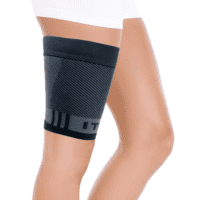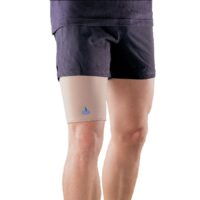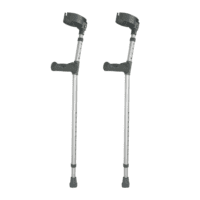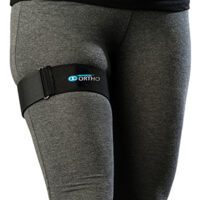
Femoroacetabular Impingement Syndrome (FAIS)
What is Femoroacetabular Impingement Syndrome?
Femoroacetabular Impingement Syndrome (FAIS) occurs when there is a structural mismatch between the femoral head and the acetabulum, leading to increased friction and pain during movement.
What Causes FAIS?
Genetics and developmental abnormalities may contribute to the formation of bony bumps or deep acetabular sockets that cause FAIS. However, the condition is more likely to affect individuals who subject their hip joints to repetitive or excessive physical activities, such as athletes, sports professionals, and physically active people.
Primary or idiopathic factors that are related to our activities throughout our lifespan and our body’s response to them, particularly during youth, can cause FAIS. This explains why athletes, sports professionals, and active individuals are more susceptible to the injury.
Secondary causes of FAIS may include previous hip pathology or trauma, such as Perthes disease, Slipped Capital Femoral Epiphysis (SCFE), or a fracture of the femur.
If you experience hip or groin pain or limited range of motion, it is essential to seek medical attention and proper treatment to manage symptoms and prevent further damage to the hip joint. Consulting a hip physiotherapist or hip surgeon can provide specific advice regarding your symptoms and the most appropriate course of treatment.
How is Femoroacetabular Impingement Syndrome (FAIS) diagnosed?
FAIS diagnosis involves a combination of:
- Symptoms reported by the patient
- Clinical signs observed during a physical examination
- Imaging findings from radiological tests.
FAIS Symptoms
The symptoms of FAIS include hip or groin pain, as well as pain in the buttock that is associated with movement. The pain is often felt deep in the groin area at the front of the hip, although it may also occur on the side of the hip or in the buttock. FAIS symptoms may develop suddenly after an injury or gradually over time due to prolonged exertion.
The pain associated with FAIS is typically aggravated by prolonged sitting, walking, crossing the legs, and during and after sports and exercise. Patients may also experience a restriction in hip flexion and internal rotation range of motion.
A physical examination by a healthcare professional may reveal clinical signs that support the diagnosis of FAIS, such as limited hip range of motion and pain with certain movements. Radiological imaging tests, such as X-rays, CT scans, or MRI scans, can help confirm the diagnosis and identify the extent of damage to the hip joint.
What are the FAIS Clinical Signs?
Physical examination for FAIS involves a series of tests, including:
- Reproduction of symptoms during the FAIR test, which involves hip flexion, adduction, and internal rotation.
- Restricted hip range of motion, especially in hip flexion and internal rotation.
- Weakness in the hip musculature.
- Pain provoked by the FABER (Flexion, Abduction, and External Rotation) test, although this test is generally non-specific.
Radiological tests can also help confirm the diagnosis of FAIS. The first line of inquiry is usually an AP X-ray of the pelvis and lateral X-rays of the hips. Further imaging techniques, such as CT or MRI scans, may be used to clarify the condition of the hip joint and rule out other differential diagnosis conditions.
What are the Types of FAIS?
There are three main types of femoroacetabular impingement syndrome (FAIS):
Cam Impingement This type of impingement is characterised by a bony bump on the surface of the femoral head (ball), which causes it to jam against the rim of the acetabulum (socket). Cam impingement usually affects young athletic men.
Pincer Impingement Pincer impingement occurs when there is excessive coverage of the acetabulum over the anterior femoral head. This can cause increased friction and pressure in the hip joint. Pincer impingement typically affects middle-aged women and is less common than cam impingement.
Mixed Type FAIS In some cases, both cam and pincer types of impingement may be present, which is referred to as mixed type FAIS.
The result of these deformities is increased friction between the acetabular socket and femoral head, resulting in pain and decreased range of motion.
FAIS Treatment
When it comes to treating FAIS, Kemp et al. (2020) recommend an initial course of non-surgical management for at least three months for most patients. Physiotherapy can be beneficial in this regard, utilising a range of techniques to help:
- Mobilise the hip joint to stretch tight structures
- Improve soft tissue flexibility and length
- Strengthen the deep, intermediate, and superficial hip muscles
- Progress hip muscle, proprioception, joint position sense, and functional control to dynamically manage your hip
Additionally, the use of painkillers and anti-inflammatories can provide temporary relief by reducing local inflammation. However, it is important to consult with a medical professional regarding the dosage and duration of use to avoid any adverse effects.
Hip Surgery for Femoroacetabular Impingement?
If your symptoms persist despite non-surgical management, your physiotherapist may discuss referral to an orthopaedic surgeon.
Rehabilitation after Hip Surgery for Femoroacetabular Impingement
A supervised rehabilitation program with a physiotherapist is essential for your post-surgical recovery. Recovery after hip arthroscopy typically takes three to four months, while open hip debridement may take up to twelve months.
If you experience groin pain, please contact your physiotherapist for a thorough assessment and prompt relief.
Rochedale - Call 38410277
Book Online: RochedaleSalisbury - Call 32751044
Book Online: SalisburySandgate - Call 32691122
Book Online: SandgateRelated Articles
- What Is Hip Impingement? – This article explains the basics of hip impingement, including symptoms and treatment options, which are directly relevant to FAIS.
- Hip Labral Tear – Since labral tears can be a consequence of FAIS, this article discusses their causes, symptoms, and treatment approaches.
- Hip Pain – Offering a broader look at hip pain, this article could help readers understand various conditions affecting the hip, including FAIS.
- Greater Trochanteric Pain Syndrome (GTPS) – GTPS is another condition that affects the hip and could be of interest to individuals learning about FAIS.
- Hip Adductor Tendinopathy – This article dives into the causes, symptoms, and treatments of hip adductor tendinopathy, which may complement the understanding of FAIS.
- Hip Flexor: Iliopsoas Groin Pain – Since FAIS can cause groin pain, this article provides insights into other causes of groin pain and their management.
- Hip Arthritis – Readers interested in FAIS may also find information on hip arthritis useful, especially regarding its impact on mobility and pain.
- Trochanteric Bursitis – Hip Bursitis – This article covers another potential source of hip pain, offering insights into its causes and treatment.
- Gluteal Tendinopathy – Discusses the symptoms and treatment of gluteal tendinopathy, which may interest those researching hip pain and FAIS.
- Hip Replacement – For readers interested in surgical options for severe hip conditions, including FAIS, this article outlines what to expect from hip replacement surgery.
































































